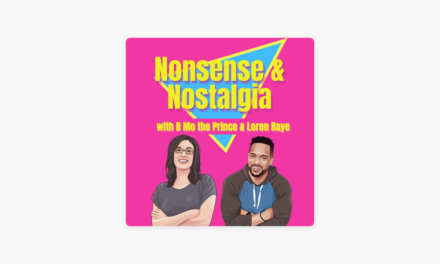What’s the news?
Side hustles. Gigs. Freelancers. Independent contractors.
According to Bankrate, one in three people needs a “side hustle” to cover regular living expenses. Over 41M independent workers exist in the U.S., contributing over $1.3T to the U.S. economy.
So what?
That’s a lot of people who have a lot of different reasons for working for themselves. Most of those people are not entrepreneurs. Using the same language they use to describe your content business isn’t accurate.
Why does that matter?
As Later CEO Roger Patterson explains: “When we … de-legitimize (entrepreneurship) with a different term, we may be sending a message to ourselves and others that our endeavors aren’t to be taken seriously.”
The Tilt Talk and Advice
What should you do?
Even if you have another full-time job, think and act like a business owner. And that doesn’t mean just calling yourself a content entrepreneur and labeling your content creations as a business. You must put on the business owner’s hat – set up and run a business.
What does that mean?
Start by documenting your plan. Clearly define who you’re creating your content for (i.e., your target audience). Then, craft a mission statement. As The Tilt founder Joe Pulizzi has said: “The mission statement never says anything about what the company is trying to sell. It’s 100% focused on the needs of the audience. That’s the key.”
We like this simple fill-in-the-blank formula from Orbit Media: “Our content is where (Audience X) gets (Information Y) that offers (benefit Z).”

Does a traditional business plan work for a creative business?
It can. But the differentiator for successful content entrepreneurs is a laser-like focus on the audience first. You have no chance of achieving your financial goals if you haven’t built the audience.
What can you do today?
Write down the details about your target audience. Document your mission statement. List three to five business goals with varying timeframes for completion. It doesn’t have to be pages and pages. Just get something down.
What else?
Separate your business finances from your personal finances. Open a separate banking account and keep separate records for your business. Consider your legal structure options. Many sole proprietors establish single-member limited liability companies (LLC). In most states, the formation rules and filing requirements aren’t complex.
What if you don’t know how to do it?
We’ve tackled the first steps, but building a business requires doing your homework. (Yes, we know the business side of things probably isn’t why you got into the content business.) The Small Business Administration website is a trove of educational info. See what programs your local small business development center or chamber of commerce offers. Find a business mentor through the SCORES program.
If you have the budget, ask your entrepreneurial peers for recommendations on financial, legal, or business experts who could help your business.
What if your plan is wrong (or at least not that great)?
Your business plan isn’t written in stone. You may think you know what your audience will respond to only to find they are more interested in something else you do. (That’s how The Tilt founder Joe Pulizzi pivoted to start the successful Content Marketing Institute.)
Revisit your business plan regularly, using it as the compass for your business and adjusting when a new or improved path reveals itself.
What else?
A solid, documented plan is helpful for one other big reason – it makes it a lot easier to get rid of “side hustle” and “gig worker” from your vocabulary. You’ll feel more confident that you’re on the entrepreneurial path. And maybe then, you can make your content business your “real” job.
Want to learn more about the content business model for your business? Get the step-by-step details in the new edition of Content Inc. released this month by The Tilt founder Joe Pulizzi.
About the author
Ann regularly combines words and strategy for B2B, B2C, and nonprofits, continuing to live up to her high school nickname, Editor Ann. An IABC Communicator of the Year and founder of G Force Communication, Ann coaches and trains professionals in all things content. Connect with her on LinkedIn and Twitter.










